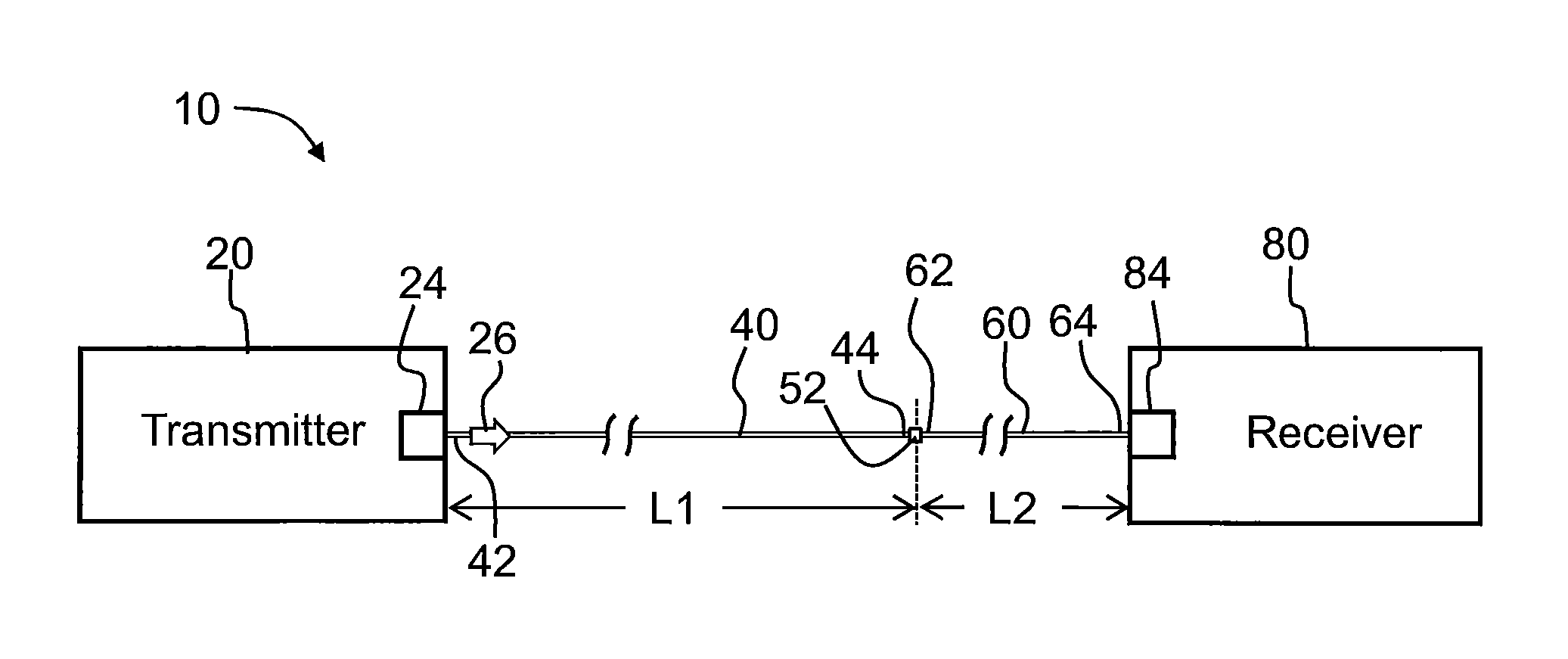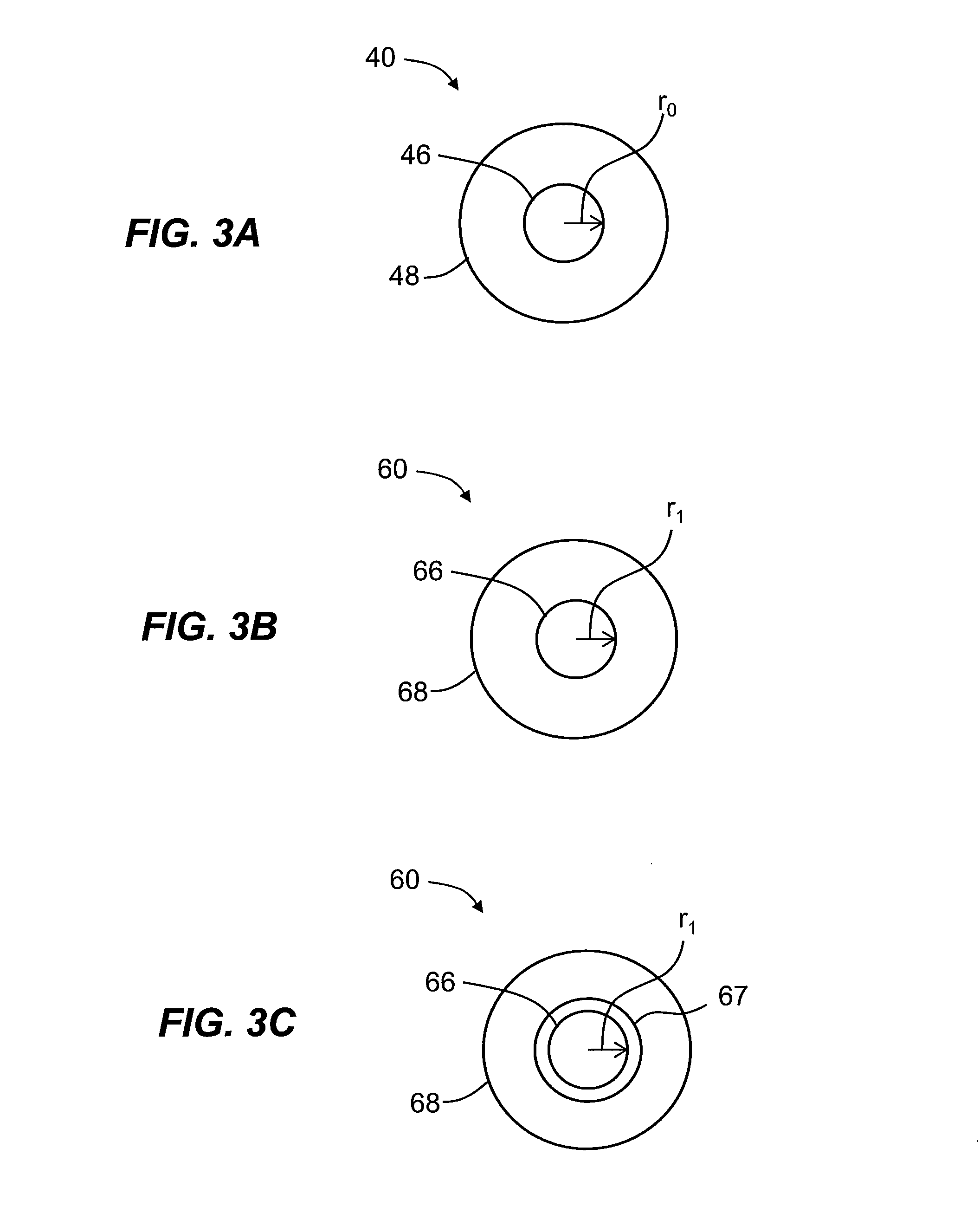Multimode optical fiber systems with adjustable chromatic modal dispersion compensation
- Summary
- Abstract
- Description
- Claims
- Application Information
AI Technical Summary
Benefits of technology
Problems solved by technology
Method used
Image
Examples
Embodiment Construction
[0029]The symbol μm and the word “micron” are used interchangeably herein.
[0030]The term “relative refractive index,” as used herein, is defined as:
Δ(r)=[n(r)2−nREF2)] / 2n(r)2,
where n(r) is the refractive index at radius r, unless otherwise specified. The relative refractive index is defined at the fiber's peak wavelength λP. In one aspect, the reference index nREF is silica glass. In another aspect, nREF is the maximum refractive index of the cladding. As used herein, the relative refractive index is represented by Δ and its values are given in units of “%,” unless otherwise specified. In cases where the refractive index of a region is less than the reference index nREF, the relative refractive index is negative and is referred to as having a depressed region or depressed index, and the minimum relative refractive index is calculated at the point at which the relative index is most negative, unless otherwise specified. In cases where the refractive index of a region is greater than ...
PUM
 Login to View More
Login to View More Abstract
Description
Claims
Application Information
 Login to View More
Login to View More - R&D
- Intellectual Property
- Life Sciences
- Materials
- Tech Scout
- Unparalleled Data Quality
- Higher Quality Content
- 60% Fewer Hallucinations
Browse by: Latest US Patents, China's latest patents, Technical Efficacy Thesaurus, Application Domain, Technology Topic, Popular Technical Reports.
© 2025 PatSnap. All rights reserved.Legal|Privacy policy|Modern Slavery Act Transparency Statement|Sitemap|About US| Contact US: help@patsnap.com



